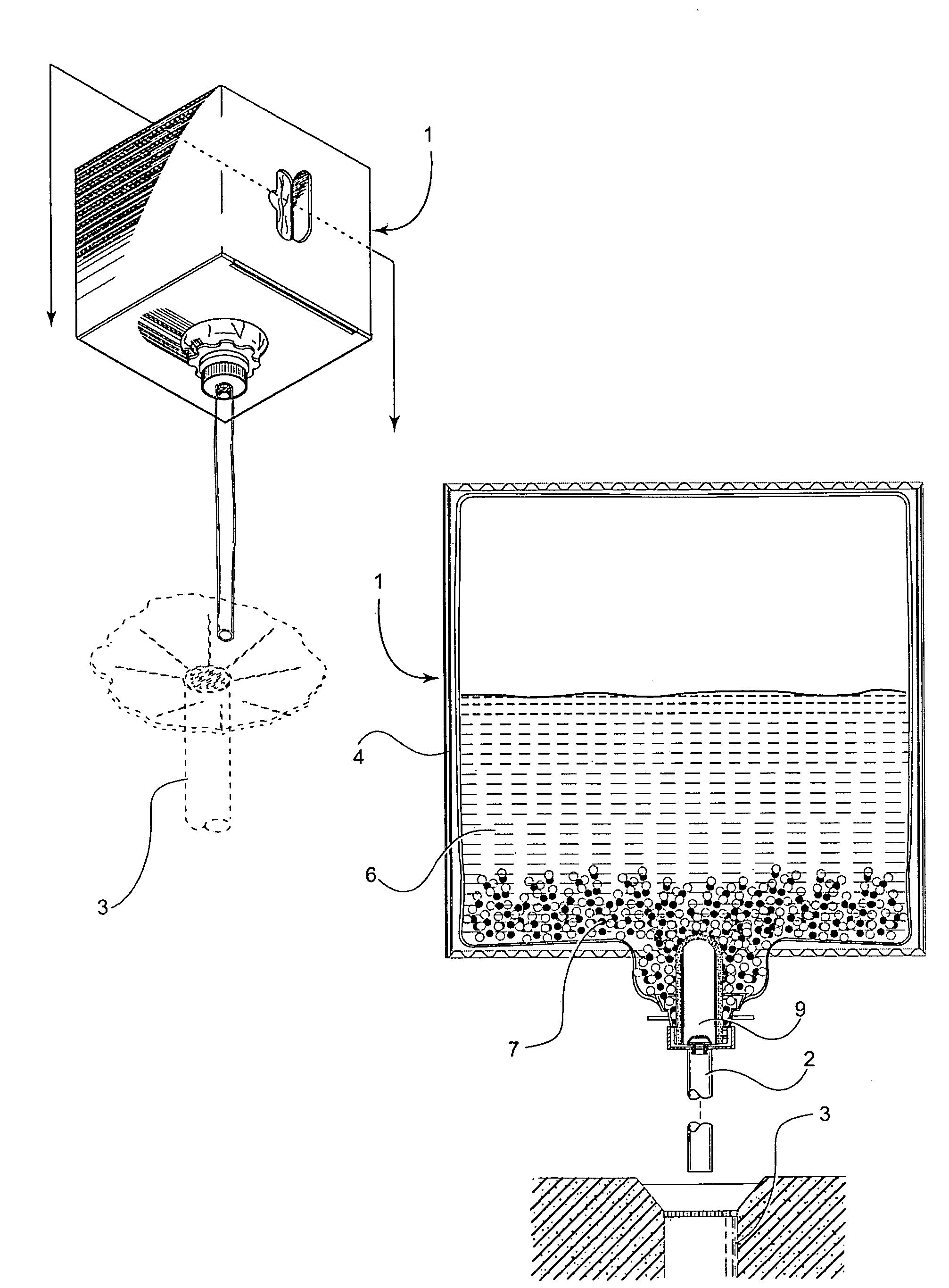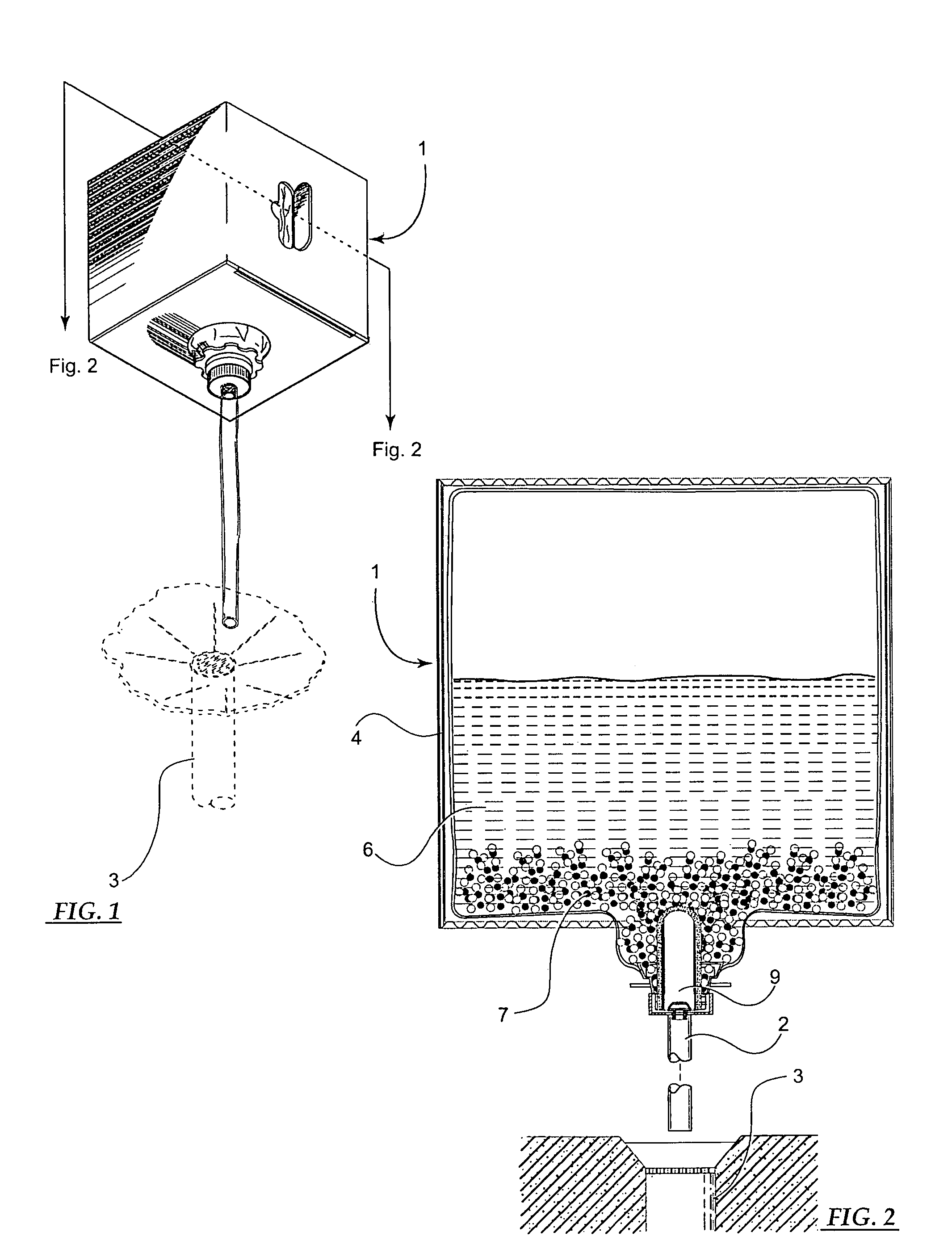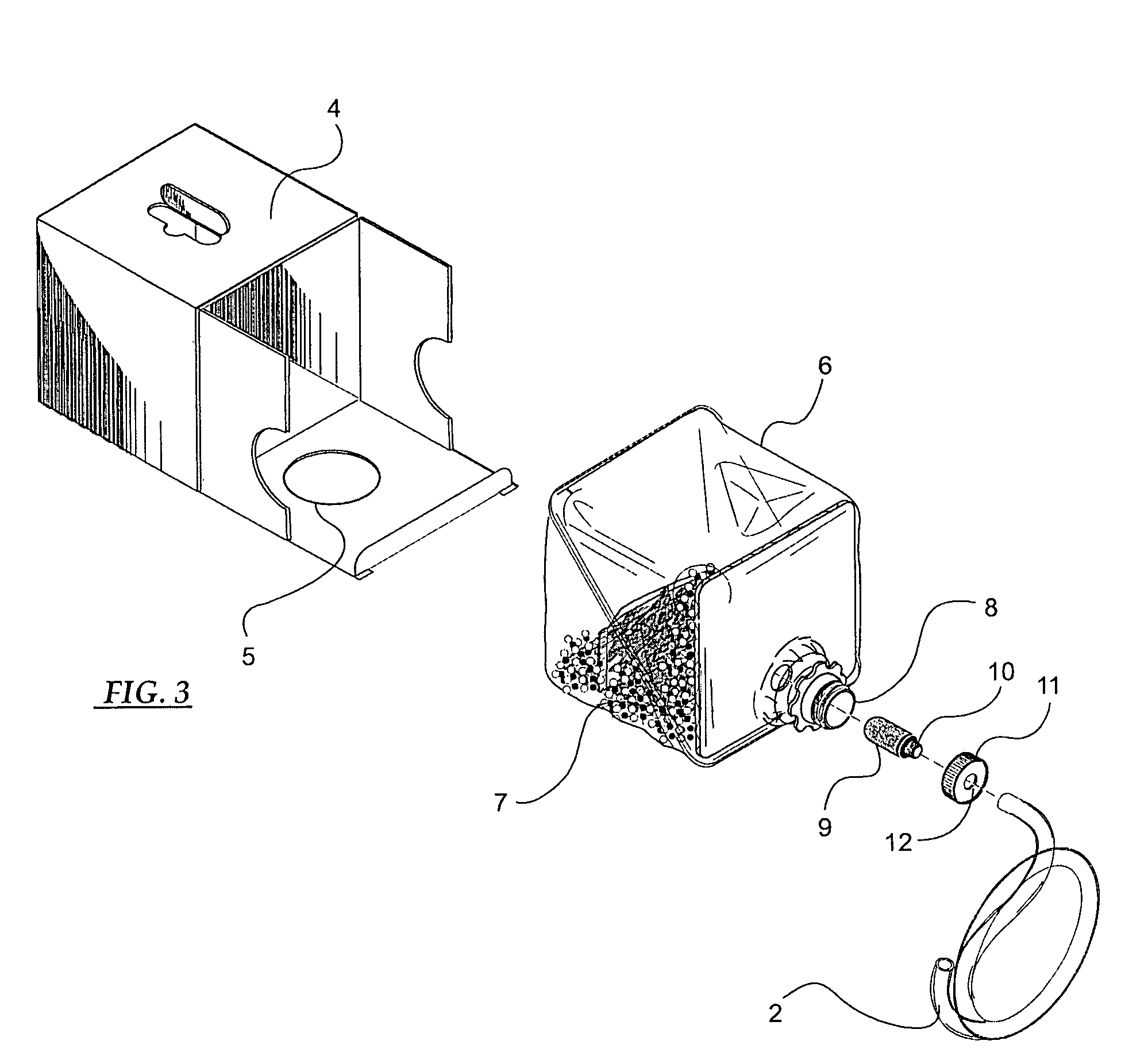Apparatus and method for remediation of a waste stream
a technology of apparatus and waste stream, applied in the direction of biological water/sewage treatment, separation process, filtration separation, etc., can solve the problems of unsafe water disposal without treatment, general ineffective treatment system relying on manual delivery of remediation formulation, and particularly troublesome floor drains located in areas used for health care or food processing and preparation. , to achieve the effect of effective waterborne remediation composition
- Summary
- Abstract
- Description
- Claims
- Application Information
AI Technical Summary
Benefits of technology
Problems solved by technology
Method used
Image
Examples
Embodiment Construction
[0049]For the purposes of the invention described herein, the terms listed below shall have the following respective meanings:[0050]The term “porous” is herein defined as a property of a material having numerous small interconnecting pores, holes or channels that render a material permeable or pervious to liquid-borne compositions.[0051]For purposes of the invention described herein, the terms “pore size” and “average pore diameter” are synonymous and are classified according to the International Union of Pure and Applied Chemistry (IUPAC) Subcommittee of Macromolecular Terminology, Feb. 26, 2002.[0052]The “pore volume” is the sum of the volumes of all pores in given quantity of porous material. The “percent porosity” is the void volume fraction of a porous material multiplied by 100. For the purposes of the invention described herein, the terms “pore volume” and “void volume” are synonymous and the term “percent porosity” will be used to describe the volume of the void space in a p...
PUM
| Property | Measurement | Unit |
|---|---|---|
| pore size | aaaaa | aaaaa |
| pore size | aaaaa | aaaaa |
| pore size | aaaaa | aaaaa |
Abstract
Description
Claims
Application Information
 Login to View More
Login to View More - R&D
- Intellectual Property
- Life Sciences
- Materials
- Tech Scout
- Unparalleled Data Quality
- Higher Quality Content
- 60% Fewer Hallucinations
Browse by: Latest US Patents, China's latest patents, Technical Efficacy Thesaurus, Application Domain, Technology Topic, Popular Technical Reports.
© 2025 PatSnap. All rights reserved.Legal|Privacy policy|Modern Slavery Act Transparency Statement|Sitemap|About US| Contact US: help@patsnap.com



